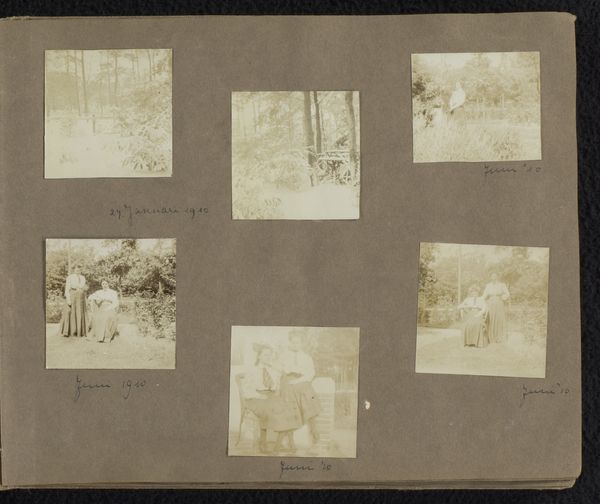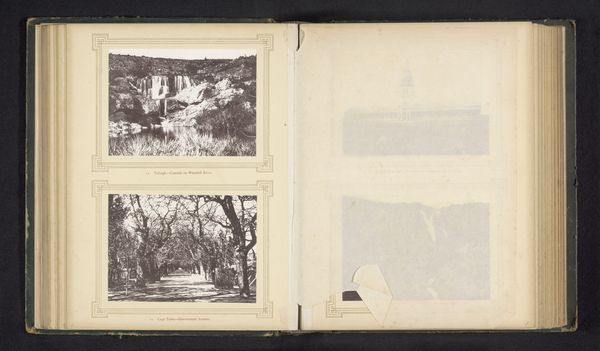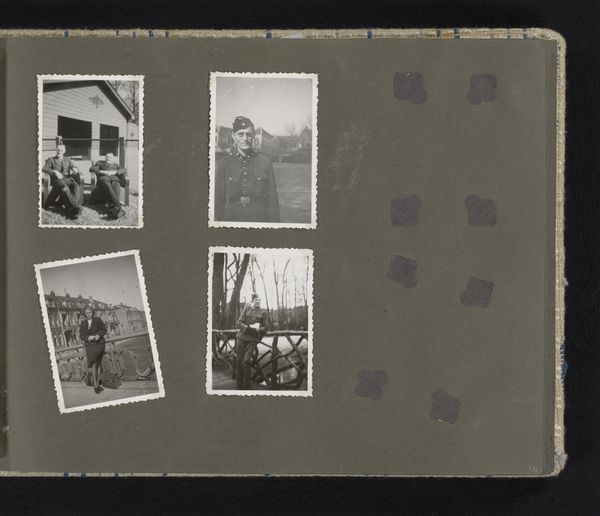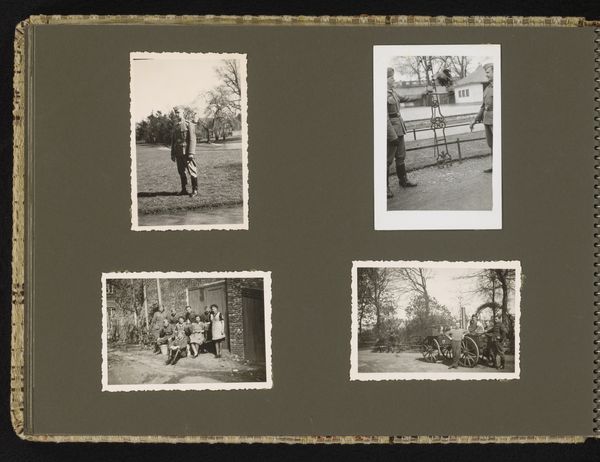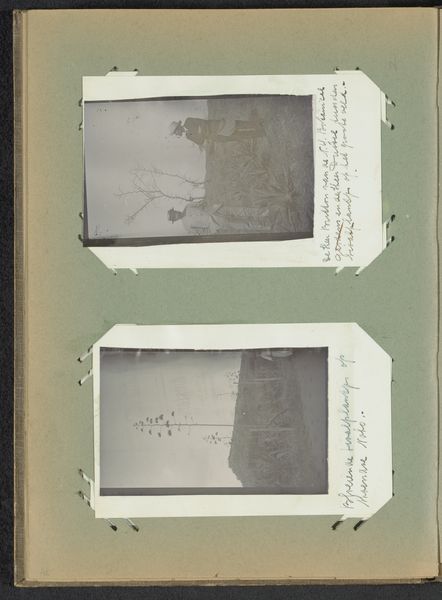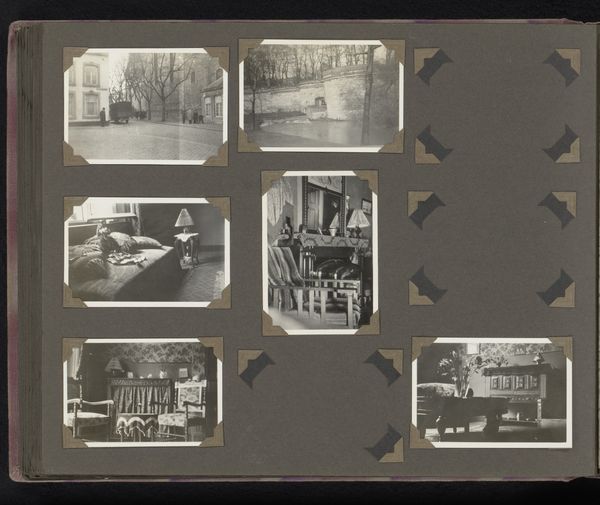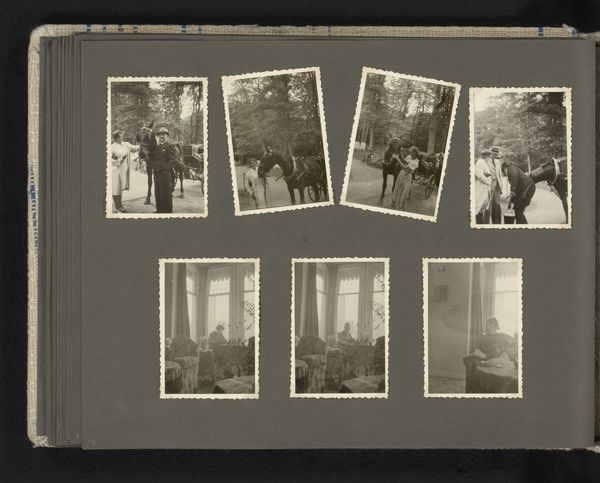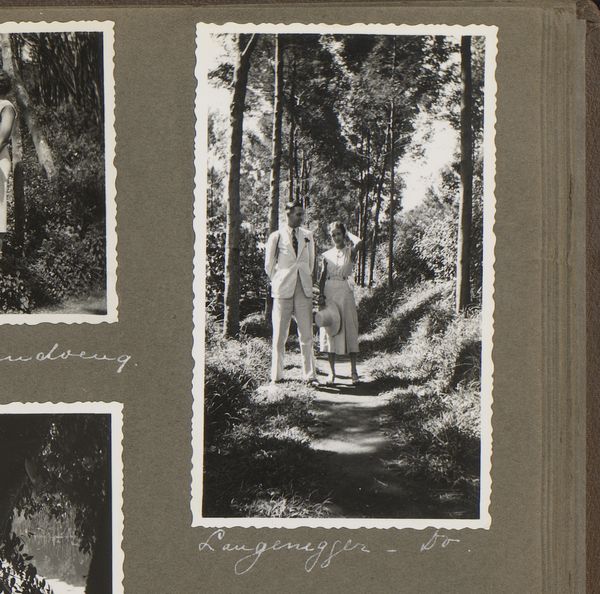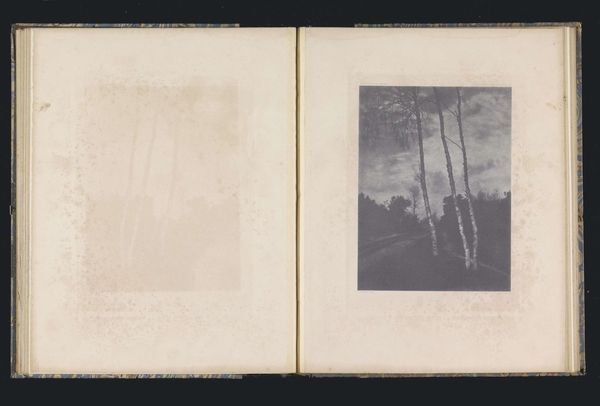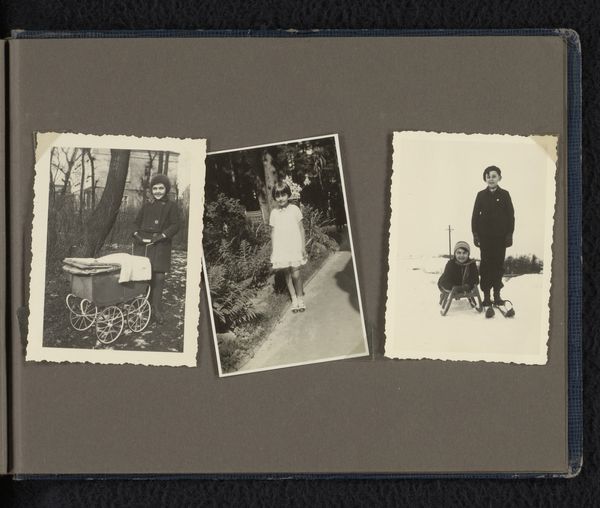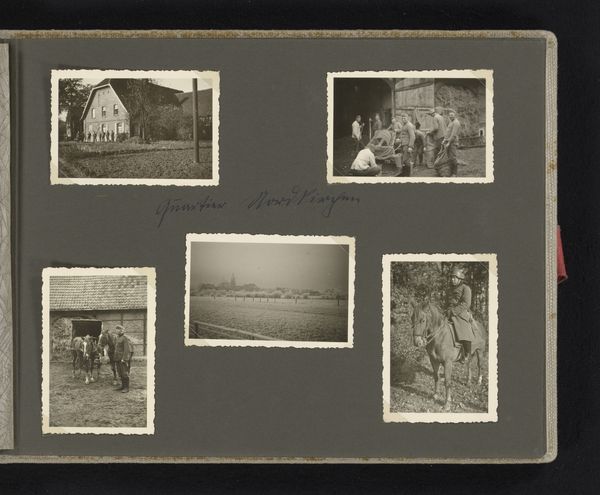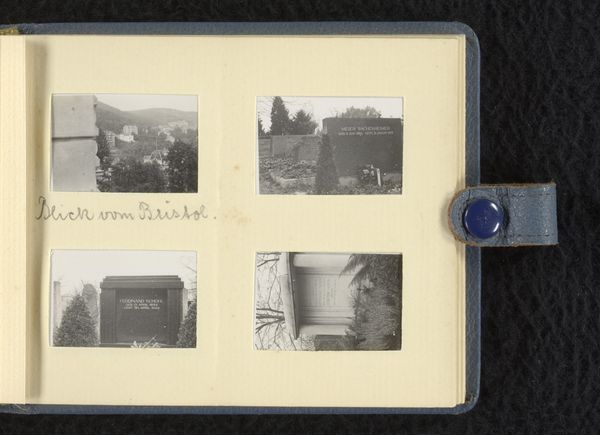
Else Wachenheimer-Moos en haar broer Willy Moos met een onbekende tante of nicht in een tuin met Japanse kersenbloesem, mei 1932, Stade (Saksen) 1932 - 1935
0:00
0:00
photography, gelatin-silver-print
#
portrait
#
pictorialism
#
landscape
#
photography
#
gelatin-silver-print
#
genre-painting
Dimensions: height 60 mm, width 60 mm, height 150 mm, width 210 mm
Copyright: Rijks Museum: Open Domain
Curator: Let’s consider this gelatin silver print titled "Else Wachenheimer-Moos en haar broer Willy Moos met een onbekende tante of nicht in een tuin met Japanse kersenbloesem, mei 1932, Stade (Saksen)," taken between 1932 and 1935. It is part of the Wachenheimer family’s personal collection. Editor: Immediately I'm struck by its wistful quality – a captured moment of ephemeral beauty, you know, like pressing a flower in a book. The soft focus feels very deliberate. Curator: Indeed, the aesthetic resonates with pictorialism, a style known for its atmospheric effects, reminiscent of painting. Placing this image into its socio-political setting, it comes to mind that in 1932 Germany, the shadow of Nazi ideology was growing ever darker, adding another layer of understanding of a family amidst societal fragility. Editor: Wow, makes you wonder about what happened to them, doesn’t it? Looking at this image, I imagine a sense of resistance too, perhaps… this need to document ordinary beauty amid mounting uncertainty. The cherry blossoms act as such a strong contrast to the looming threat. Curator: Absolutely. These images function as an affirmation of life and normalcy. It reflects the family’s attempts, conscious or not, to document identity and connection to nature during very uncertain times. I imagine the seemingly calm act of preserving their life amidst larger political shifts feels like quiet rebellion. Editor: I find it quite moving. Thinking about family photos, albums… these tender efforts to retain pieces of ourselves across the years. It makes you wonder what future viewers will find resonating in *our* photographs decades from now, you know? Curator: A photograph indeed creates such an archive of memory. We, as future viewers, hold a position to understand this photograph through the lenses of history, family identity, memory, and gender, inviting conversations surrounding cultural memory, gendered experiences, and the nature of belonging. Editor: Definitely got me pondering. I walk away seeing this not just as a photo but like a little vessel filled with hope, fear, memory, all nestled into one blurry, beautiful frame. Curator: And for me, it acts as an encouragement to engage critically and empathetically with history, understanding individuals' lives amidst macro narratives. It encourages intersectional narratives and nuanced storytelling.
Comments
No comments
Be the first to comment and join the conversation on the ultimate creative platform.
